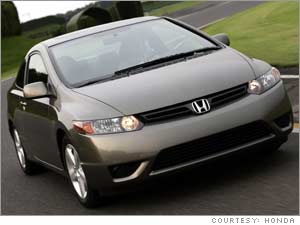As a technology,
DVDs have gone from bleeding-edge to ho-hum. Sales of players dropped in 2005 to 14.5 million units, down from 22 million in 2003, and DVD retail sales growth fell from 34% in 2004 to just 5% in 2005. This plateau is to be expected of a maturing technology, as most everyone who wants a DVD player can now afford one, and collectors have finished backfilling their video libraries.
Though
the industry would like to see a hot new video technology take off, consumers are going to need a compelling reason to switch from a format that they already see as adequate and reasonably priced. Moreover, we've recently seen evidence that the true disruptive power of the DVD has yet to be felt.
This past week saw the release of a low-budget, no-star thriller titled
Bubble, directed by Oscar winner
Steven Soderbergh (
Traffic, Erin Brokovich, Sex Lies & Videotape). The release might be unremarkable other than the fact that
it was released simultaneously in theatres, on DVD and on cable TV (HDNet).
Bubble's financiers Mark Cuban and Todd Wagner believe that this strategy represents a new age in film distribution, a way to make theatres relevant again while reducing piracy. The film's production company will give one percent of DVD revenues (each sold at a premium price of $30) to theatres that show the movie. However, theatres remain dubious. "We feel that day and date (for a DVD release) dilutes the theatrical release," said Terrell Falk, a Cinemark spokeswoman. "This wouldn't be something we would show." Other Hollywood power players have come out strongly against it, most notably directors M. Night Shamalylan and Tim Burton.
Soderbergh counters that simultaneous release is simply facing up to market reality. "Simultaneous release is already here," he said of recent movies that have recently been pirated and distributed over the Internet. "We're just trying to gain control over it." Says Cuban of the approach, "I don't think it will cannibalize sales any more than my ability to cook a steak keeps me from spending a lot of money at steak houses." Supporters of the strategy add that it could help lower marketing costs while stimulating interest in certain movies.
Soderbergh intends to simultaneously release more movies in the future, though his next major production --
The Good German, starring George Clooney -- won't be one of them. Meanwhile, Spike Lee is among other directors considering the approach.
Simultaneous release won't have a real financial impact on Hollywood until a major blockbuster is released that way. In the meantime, the film industry will be watching
Bubble very carefully. Already, the uproar this little movie has caused may prove right the old adage, "when you propose an idea and everyone hates it, you know you're on to something." The one group who might love the idea is the one group that really counts -- the consumers who will pay to see movies and upgrade their home theatre systems. Or not.
UPDATE: If simultaneous release is the wave of the future,
Bubble suggests that DVD sales will benefit far more than theatre box office. The movie website BoxOfficeMojo.com notes that this past weekend (1/28-29),
Bubble earned a measly $70,664 in theatres, or $2,208 per theatre. However, its distributors claim that DVD sales were $5 million -- quite healthy, considering the movie's budget was only $1.6 million.
Sources:
Ubercool,
Ars Technica,
USA Today,
Business Week






















